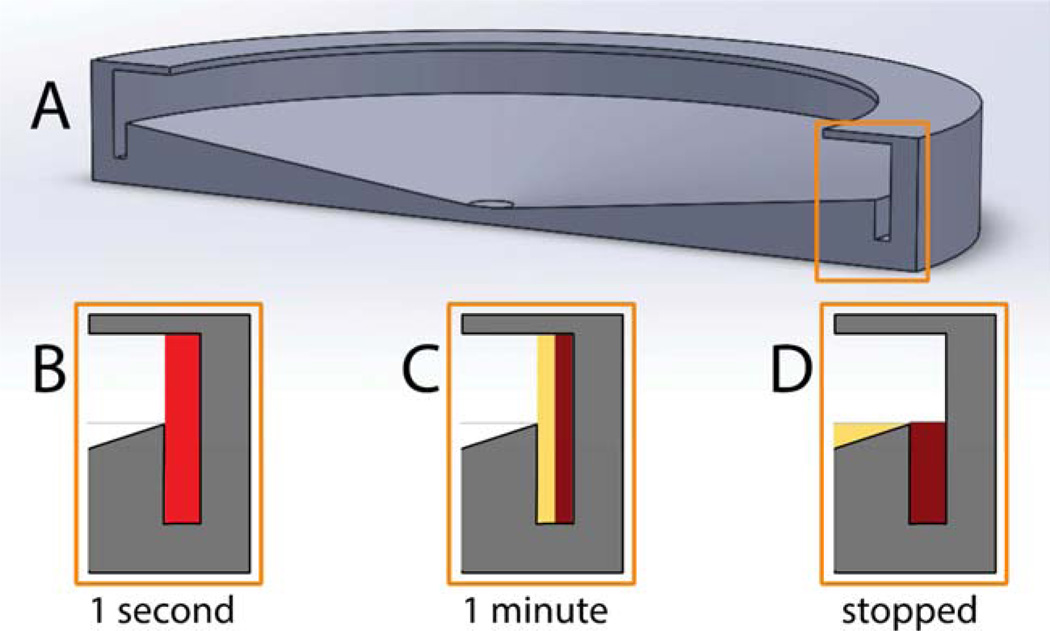Figure 3.
(A) Drawing (to scale) of rotating hollow disk for sedimentation-based separation of bacteria from blood. (B) Schematic showing that initially 7 mL of bacteria-spiked blood are placed in the disk. Upon rotation at 3,000 rpm, the blood is spun to the inside surface of the wall of the hollow disk and the blood components start to sediment toward the wall. (C) After about 1 min there is a layer of clear plasma which still contains the bacteria because they sediment much more slowly than RBCs and WBCs. (D) When the rotation stops, the packed cells slough down and are trapped in the well at the base of the channel, while the plasma containing bacteria drains off and is collected.

